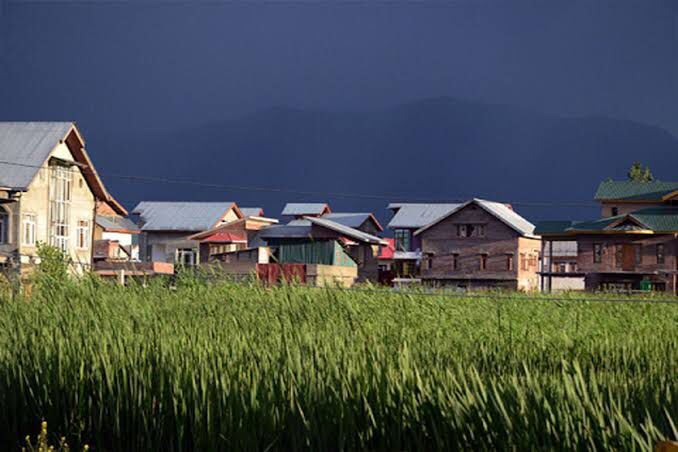Mohan Das Karamchand Gandhi was a great journalist & media crusader, not only because he was great in so many ways and his greatness was total, but because he had a great gift of expression and communication.
Journalism is not scholarship; it is literature or history written in a hurry. In part it is action too. A journalist must have the capacity to understand, to reach, and to communicate; and for half a century Gandhiji was the greatest one-man medium of mass communication.
Gandhiji was most fearless of journalists. His life was an epic of struggle for freedom and equality, though national freedom came in the last year of his life. He had been carelessly expressing his freedom before it came, fighting so many restrictions imposed by the British regime from time to time. He also fought for the freedom of press. Although this might see natural, but he was the most independent journalist possible, independent of the government business and party in the usual external and internal pressure of the press.
Gandhiji not only edited his papers, but wrote for them incessantly. They were small papers, inevitably weekly papers. But they were the greatest weekly papers that have ever been published. Gandhi’s advent into journalism, as in many other things was accidental. In 1904, he was asked to take over a printing press which was at work in Durban (South Africa) under the direction of Shree MadanjeetVyavharik, a Mumbai ex-school teacher and Gandhi’s political co-worker. Gandhi had contributed a large portion of its cost. Indian opinion published weekly in Hindi, Gujarati, Tamil and English and was printed at this press with MansukhlalHiralal Nagar as its editor. All the editions except one had large circulations compared to other weeklies.
It was through Indian opinion that Gandhi arrived at the word ‘Satyagraha’. In the struggle of 1913, the paper was Gandhi’s standard. 1914 was the year of his farewell of South Africa and his association with the paper ended.‘Young India’ was established in a more spacious atmosphere and a far greater vogue. Like Indian Opinion, it was also ready for Gandhi to take over. He was keen on conducting a paper in Gujarati also and he was offered ‘Navjeevan’ a monthly, which was converted into a weekly. Under his full control, Navjeevan appeared on October 7, 1919 and a day later ‘Young India’ appeared; both from Ahmedabad. Gandhi was the editor of both the papers and Mahadev Desai was its publisher. Both journals were priced one Anna each and the circulation of each at one stage rose to the neighbourhood of forty thousand. All Indian newspapers reproduced Gandhi’s articles. Interestingly, he did not accept any advertisement.
Before taking up ‘Navjeevan’ and ‘Young India’, Gandhi had edited for a short-time an un-registered weekly ‘Satyagrah’, priced one paise, in April 1919 to protest against the discriminatory and biased policies of British Government. This newspaper was the weapon of civil disobedience. Actually, the idea was to publish in every centre a written newspaper without registering it, occupying not more than one side of half a full scape.
On Feb. 11, 1933, the first issue of weekly ‘Harijan’, priced one Anna, appeared from Pune. It was published for and by the Servants of the untouchable society (HarijanSevakSangh) and contained poem by Tagore ‘The Cleaner’. Its ten thousand copies were published. ‘Harijan’ was not a name of Gandhi’s choice. Some untouchable correspondents had suggested it. He also published “HarijanBandhu” in Gujarati and “HarijanSewak” in Hindi. All three papers focused on India’s and the world’s social as well as economic problems.
Fight against Censorship
The “Bharat Chhodo” movement meant a change. It was “Karo Movement” and Gandhi did not want any newspaper to be published after the severest possible restrictions on publication of news of the “Bharat Chhodo” movement. At historic AICC session of August 1942, Gandhi said that he had asked the fellow journalists to realise their responsibilities. He wanted them not to become partner with the government with censorship and pre-censorship. When he along with Sardar Patel and other leaders have been arrested, all old fight of “Harijan” and “Navjeevan” were hampered.
After a lapse of three and half years, “Harijan” was revived in Feb. 1946. Gandhi was again immersed in harijan welfare work. It had to rename the weekly and wanted to call it “Bhangi”. After Gandhi’s death on January 30, 1948, an attempt was made to carry on with the “Harijan” in his memory. There were hectic debate & arguments on this issue, but controversy arose among his followers and finally, the historic “Harijan” was shut down forever.
Various other Publications:
In ‘Gandhi era‘ of journalism, many newspapers were published to give voice to the freedom movement. ‘Swarajya’ (1920), ‘Karmaveer’ (1920), ‘Desh’ (1920), ‘Aaj’ (1920), ‘Arjun’ (1923) were some famous newspapers published at that time. In 1920, Ramrikh PalSahgal started publishing journals (on economic subject) named ‘Chand’ and ‘GyanMandal’ from Prayag and ‘Swarth’ from Kashi, Varanasi. Monthly journals like ‘Sudha’, ‘Madhuri’, ‘Hans’ and ‘Vishal Bharat’ and daily journals like ‘Hindustan’, ‘Nav Bharat Times’, ‘Veer Arjun’ (all from Indraprastha, Delhi) and ‘Aaj’ were well known to all. Many daily journals had their weekly edition. Research papers like ‘Rajasthan Bharatiya’, ‘MaruBharati’, ‘Hindusthani’, ‘NagariPracharaniPatrika’ etc. were published in this era.
Gandhiji was a natural writer in Gujarati, but had a place as a writer in English language too. He had the power of Rajas and Avtars. Three objects of journalism were propagated by Gandhi in Hind Swaraj (1921). First object is to understand the popular feelings &thoughts of the people and to express it; second is to arouse national, historical & spiritual feelings among the people; and the third objectis to write down the faults fearlessly.
Gandhi’s newspapers suggest that his purpose of journalism was to serve the society in all respect and inspire the mass for a greater cause. He talked to the people in their own language and succeed to communicate the messages concerned. Gandhi’s practice of journalism set high ethical and moral standard by practicing mass oriented and value based journalism, which will always be a bench mark for the print media world.
(The author is a technocrat & academician.)




